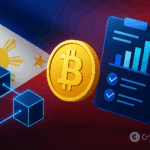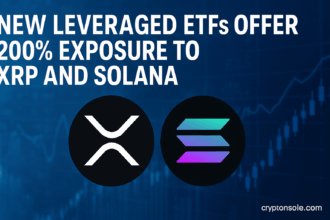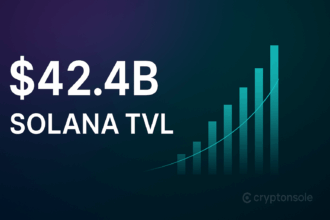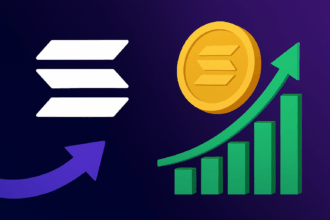Key Takeaways
- Solana’s Alpenglow proposal aims to cut block finality from 12.8 seconds to just 150 milliseconds.
- The upgrade introduces Votor, a direct-vote protocol, and Rotor, a bandwidth-optimizing dissemination system.
- Community voting is underway, with the proposal needing 33% validator participation to pass quorum.
Solana Introduces Alpenglow for Faster Consensus
One of the most ambitious upgrades is on the way for SOL as the Alpenglow proposal has reached the stage of the validator vote. According to the description, the initiative is a substantial change in Solana’s consensus mechanism aimed at bringing the blockchain closer to Web2-level performance while still ensuring security and fairness.
Instead of the current PoH (Proof-of-History) and TowerBFT, the Alpenglow proposal, if it gets the green light, will come up with a new dual architecture that is based on two components, namely Votor and Rotor for SOL.
Votor: Cutting Block Finality to 150 Milliseconds
The main thing about the upgrade is Votor, a direct-vote consensus protocol through which block finality gets reduced from 12.8 seconds to only 150 milliseconds. Thus, users of SOL would be able to experience transaction completions almost6 on the spot, and this feature becomes very important in the case of DeFi platforms, gaming applications as well as real-time financial systems.
Such a speed-up could place SOL among the Solana blockchains with the fastest performance in the industry, making it as responsive as traditional internet applications and, at the same time, allowing a large number of people to use it.
Rotor and the 20+20 Resilience Model
The second part is Rotor which is a protocol for data dissemination designed with the focus on network efficiency. Rotor is expected to make for better bandwidth usage and thus improve scalability by reducing the number of network hops. Rotor is not included in Alpenglow’s first release, but plans for its future deployment are there.
The “20+20” resilience model that Alpenglow introduces is also there to make sure that the network is stable when 20% of the validators are adversarialx and 20% are offline or unresponsive. In this way, Solana’s defenses against interruptions and attacks are fortified.
As per the plan, Votor, Rotor alongside the resilience framework all together leads to a better system for SOL not only in terms of speed but also safety. Additionally, the changes made by them will help create a fairer economic environment for the validators as well as the users.
Community Voting Underway
As of now, voting on the Alpenglow proposal has officially begun, marking an important moment for Solana’s governance. According to data from the blockchain’s official governance dashboard, 10.09% of validators have voted in favor, while 9.97% have voted against. For the proposal to move forward, it must secure more than 33% validator participation, making active community involvement2 absolutely crucial.
Industry experts suggest that if the proposal passes, it could significantly strengthen Solana’s positioning as a top Layer 1 blockchain. Its focus on scalability, speed, and efficiency and much more would further enhance SOL’s role in powering decentralized finance (DeFi), blockchain-based gaming, and real-world asset tokenization. Many see this vote as more than just a governance exercise—it could be a pivotal step in shaping SOL’s long-term ecosystem growth
Summary
Solana’s Alpenglow upgrade marks a pivotal moment for the blockchain’s evolution. By introducing Votor to reduce block finality to 150ms and planning Rotor for future efficiency gains, the upgrade could bring Web2-level performance to blockchain infrastructure. With voting underway and validator participation climbing, Alpenglow has the potential3 to redefine speed, security, and scalability in the SOL ecosystem.
Also Read: U.S. Banks Raise Alarm Over GENIUS Act’s Stablecoin Loophole
R5XKH9Q3












